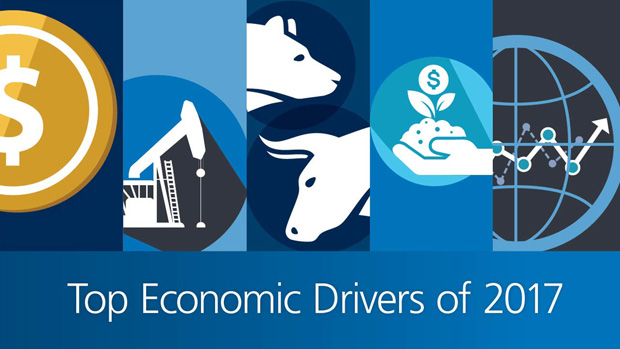Canadian agriculture benefited from a relatively low dollar throughout 2016 and this trend is expected to continue into 2017, according to J.P. Gervais, Farm Credit Canada’s chief agricultural economist.
“There are certainly other factors that could influence Canadian agriculture, such as the global economy, the investment landscape, commodity and energy prices,” said Gervais, speaking to his top five agriculture economic trends to watch in 2017. “The Canadian dollar, however, has been a major driver for profitability in the last couple of years and could have the biggest influence on the overall success of Canada’s agriculture industry in 2017.” Gervais is forecasting the dollar will hover around the 75-cent mark and will remain below its five-year average value relative to the U.S. dollar in 2017, potentially making the loonie the most significant economic driver to watch in Canadian agriculture this year.
The low dollar not only makes Canada more competitive in agricultural markets relative to some of the world’s largest exporters, but it also means higher farm cash receipts for producers whose commodities are priced in U.S. dollars.
Producers
A low Canadian dollar will keep the demand for Canadian agricultural commodities healthy, which is especially important considering the higher projected supply of livestock and crops. This means potential revenue growth, especially considering a likely rebound in livestock prices off the weakness observed in the second half of 2016.
“A lower Canadian dollar makes farm inputs more expensive, but the net impact in terms of our export competitiveness and cash receipts for producers is certainly positive,” Gervais said. “Given the choice, producers are better off with a low-dollar than one that’s relatively strong compared to the U.S. dollar.”
Food processors
Food processors are also better off with a low Canadian dollar, which is partly the reason behind the strong growth in the gross domestic product of the sector over the past few years. Canadian food products are less expensive for foreign buyers, while it is more difficult for foreign food processors to compete in the Canadian market, according to Gervais.
“The climate for investment in Canadian food processing is good, given the low dollar and growing demand in the U.S.,” Gervais said. He projects that exports of food manufactured products to the US could climb 5 per cent in 2017.
Agribusinesses
A lower-than-average U.S. per Canadian dollar exchange rate supports foreign sales of agribusinesses as more than 90 per cent of all exports are made to the U.S., and compensate for a weaker demand due to the recent downturn in the U.S. farm economy.
“The dollar’s impact on agribusinesses is complex and not as consistent as it is on producers and food processors,” said Gervais, noting that strong farm cash receipts due to a weak loonie are generally good news for agribusinesses, since they can expect sales to producers to increase with rising revenues.
But he also notes that “a weak loonie raises the price of inputs like fertilizers or equipment, making them more expensive for producers, which may impact their purchase decisions.”




